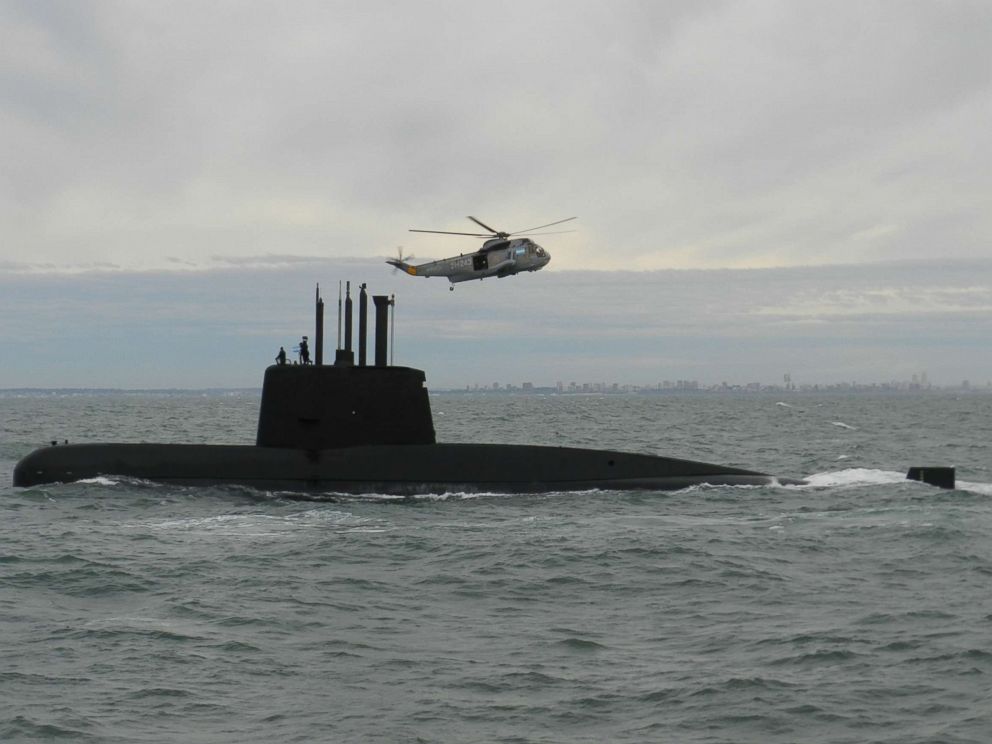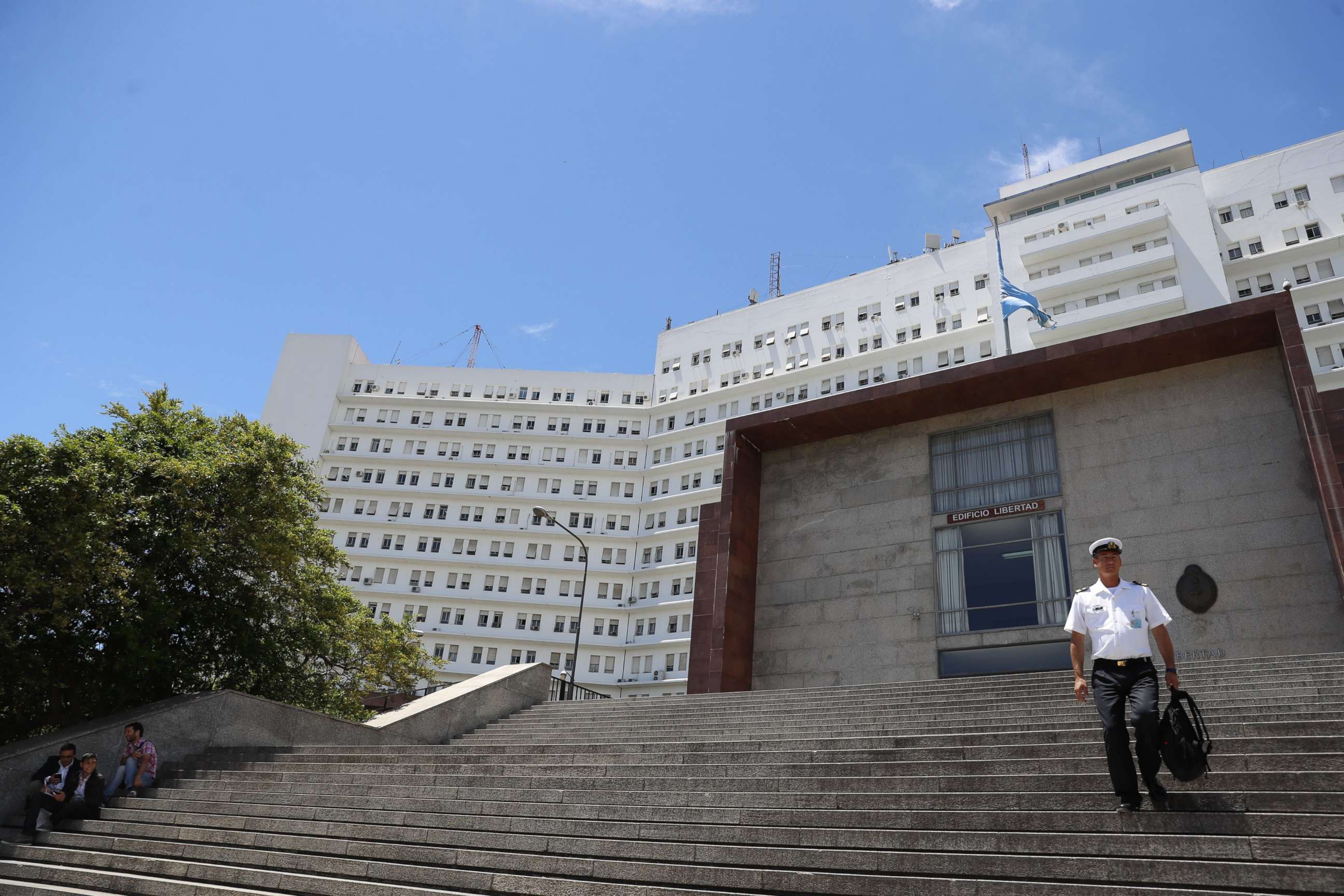Argentine Navy loses communication with submarine carrying crew of 44
The Navy said it had not heard from the vessel since Wednesday.
— -- The Argentine Navy confirmed today that it has lost communication with one of its submarines.
According to the Navy, the submarine's last-known position in the area of operations was near the San Jorge Gulf, about 240 nautical miles from the country's southern shore. Communications were reportedly knocked out Wednesday because of a fire, local media said.
No SOS warning was received at any time, the Navy said. A spokesperson hypothesized that it would be logical that a major electrical problem could have knocked out the submarine's communications.
The missing watercraft -- the ARA San Juan -- is a German-built TR 1700 class diesel-electric submarine, the Navy said. It was on a routine trip from a base in Ushia, on the southern tip of the continent, to its home base of Mar del Plata.
The ARA San Juan debuted in 1983 and hadn't experienced any problems until two years ago, when it was sent to port to be repaired, the Navy said. The nature of those repairs is unclear.
"We have a loss of communications. We are not talking of an emergency," said Adm. Gabriel Gonzalez, according to The Associated Press.

The Navy said that four naval ships and three planes were searching for the missing submarine, as well as land-based communications stations, which are listening to all possible frequencies of transmission in case the vessel is trying to send a message.
One of the planes being used is an American NASA plane, which is equipped with instruments that searchers hope will aid in the search. The Navy has also asked that local merchant and fishing ships also keep a lookout for the submarine.
Only 15 percent of the logical search area had been surveyed by Friday afternoon, and the search area has now been widened, the Navy said.
After the search began during mild weather, visuals were later hampered due to worsening weather, according to officials.
The Submarine Force Command has been in touch with the relatives of the 44 on board to keep them informed of developments.
According to the Navy, a Turbo Tracker aircraft and a B-200 aircraft had made flights Thursday and this morning.
Both the naval destroyer ARA Sarandi with a helicopter on board and the corvette ARA Rosales had also been sent to the area. Additionally, the Navy said the ARA corvette Drummond was expected to arrive and get in position today around 6 p.m. local time.
Steve Ganyard, an ABC News contributor and a former deputy assistant secretary of state, said the San Juan was almost 35 years old but had undergone a "midlife upgrade" in 2013. The submarine is one of only three in the Argentine Navy.

The U.S. Southern Command said it was monitoring the situation closely.
"We are coordinating closely with the U.S. State Department and our chain of command to be ready to assist, if asked. As of this email, U.S. Southern Command does not have a role in the ongoing search and rescue effort. We join the international community in hoping for an outcome involving no loss of life or injuries to personnel," U.S. Southern Command said.
The Argentine Foreign Ministry said that the governments of Chile, U.S. and U.K. had offered logistical support and information in the search for the missing submarine. The U.S. also deployed a plane to the massive search site in a rescue operation.
"The fact is that, if you don't know where the submarine is, when it's in distress, you can have all the rescue gear in the world and it's not going to make a difference," Ganyard said.




